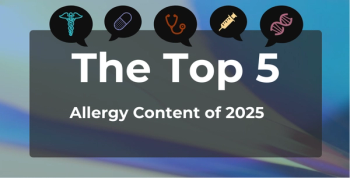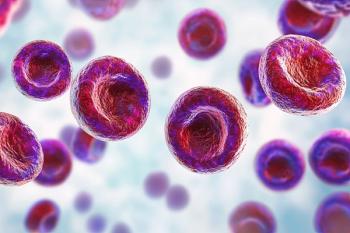
Real-World Outcomes From Third-Line SCLC Treatment Show Need for More Options
Key Takeaways
- ES-SCLC patients show limited benefit from 3L therapies, highlighting the need for novel treatments to improve outcomes.
- SCLC is aggressive, often diagnosed at an extensive stage, and treated with platinum-based chemotherapy and immune checkpoint inhibitors.
Treatment options for patients with small cell lung cancer (SCLC) who survive to a third line of therapy are insufficient, authors of a new study argue.
Patients with extensive-stage
SCLC is the most aggressive form of lung cancer, the authors explained. As a result, most patients are not diagnosed until they already have extensive-stage disease.
Treatment for SCLC typically involves platinum-based chemotherapy with etoposide or irinotecan, they said, though immune checkpoint inhibitors (ICIs) have led to “modest” improvements in survival when combined with chemotherapy.
“The regimens for initial systemic therapy include 4-6 cycles of carboplatin or cisplatin with etoposide and with atezolizumab (Tecentriq; Genentech) or durvalumab (Imfinzi; AstraZeneca), followed by maintenance atezolizumab or durvalumab,” they said.
However, relapse is common in patients with ES-SCLC. Second-line therapy is often either retreatment with the original regimen or topotecan, depending on how quickly the patient relapses, the authors noted.
“In general, those patients able to receive 2L treatment typically progress at shorter time intervals after 2L initiation with a poor prognosis,” they wrote.
After that, the next steps are less clear. There are no guideline recommendations for treating patients who relapse after 2L therapy, they noted, and there have been few clinical trials including 3L patients. In hopes of helping to fill the research gap, the investigators launched a retrospective chart review to better understand 3L treatments and responses in a real-world setting.
They used electronic medical records to identify patients with ES-SCLC who received at least 3 lines of therapy at Cancer Treatment Centers of America (now City of Hope). They found a total of 113 patients who met their inclusion criteria. The patients had a median age of 58 years, a slight majority (54%) were female, and approximately half of patients (46%) had a chemotherapy-free interval of less than 90 days after their 1L therapy.
Two-thirds of patients in the cohort received non-platinum-based chemotherapy as their 3L treatment, with most of the rest receiving immunotherapy monotherapy or platinum-based chemotherapy.
Nineteen percent of patients experienced tumor shrinkage in their 3L therapy, but just 1% had a complete response, and just 13% had stable disease. The remaining two-thirds of patients had no response. In the cohort’s first line of therapy, 75% experienced tumor shrinkage, 4% had stable disease, and 5% had complete responses. At their second line of therapy, 27% had tumor shrinkage, 16% had stable disease, and 3% had a complete response.
The median duration of response was 2.8 months, the median duration of clinical benefit was 2.5 months, the median overall survival (OS) was 5.8 months, and the median progression-free survival was 2.4 months, the investigators said.
Outcomes were similar regardless of Eastern Cooperative Oncology Group Performance Status (ECOG-PS). That finding stands in contrast with some
“The results of our analysis showed that overall, patients with SCLC who survived to receive 3L treatment are a select group with exceptionally long 1L OS of 24.5 versus 14.9 months for platinum-sensitive versus platinum-resistant patients,” the authors wrote.
Patients who were platinum resistant in 1L, they noted, had inferior time-to-event outcomes in 3L.
Taken together, the investigators said their findings “highlight that more research is warranted to identify novel therapies that improve response and disease control in patients with ES-SCLC who have an option of 3L treatment.”
References
- Bar J, Xu Q, Karve S, Hingorani P, Virani AA, Ready NE. Real-world response and survival outcomes and treatment patterns in patients with extensive-stage small-cell lung cancer receiving third-line treatment. Cancer Rep (Hoboken). 2025;8(8):e70289. doi:10.1002/cnr2.70289
- Song PF, Xu N, Li Q. Efficacy and safety of anlotinib for elderly patients with previously treated extensive-stage SCLC and the prognostic significance of common adverse reactions. Cancer Manag Res. 2020;12:11133-11143. doi:10.2147/CMAR.S275624
Newsletter
Stay ahead of policy, cost, and value—subscribe to AJMC for expert insights at the intersection of clinical care and health economics.







































